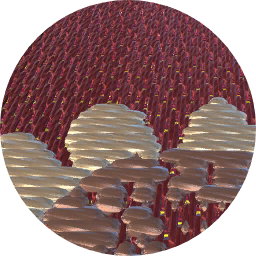Description
Cover of cotton embroidered with silk and edged with bobbin lace, Guatemala, 1870-1899
Cover of plain weave cotton embroidered with silk and edged with bobbin lace.
1931 Description: cover, coloured silks on brown cotton; satin and double running stitches. The cover is in two pieces, stitched together across the centre. At either end is a broad band of embroidery in crimson and blue-green silks, the pattern consisting of symmetrically arranged conventional flowers and leaves. Above this band at either end are three turkeys, seen from the front, in the same colours, and above these two butterflies; along one side is a narrow crocheted border in the coloured silks, and at either end is a fringe of green silk and cotton.
1975 Description: The ground cloth is a balanced weave and probably is made of the natural brown, undyed, cotton known as Cuyuscate or Ixcaco (Gossypium Mexcianum) so valued and popular in Guatemala among the Indians. This piece is not typical of Guatemalan Indian work but was probably embroidered by Guatemalans for the Spanish colonists. Silk embroidery on Cuyuscate is mentioned by Osborne in relation to the village of Totonicapan; perhaps this piece is from there as this was also a colonial centre. See L de J Osborne 'Indian Crafts of Guatemalan and San Salvador' (University of Oklahoma Press, 1965 p.149). On pp.96-97 there is a reference to the peacock and to green silk and turtle motifs.
Notes (1997): The ground is a loose plain weave with brown (undyed) cotton (Z-spun, unplied). There are 44 warp threads per inch and 34 weft threads per inch. Both ends are oversewn with red silk; neither seems to have been turned as a hem but both seem thicker and stronger than the ground. The embroidery (which is reversible) is worked with red and blue (or blue/green?) floss silk. The same type and colour of silk has been used to make a narrow bobbin lace edging which has been attached to one side. Lengths of plaited brown and blue silk (4.5" long) have been attached to both ends to form a fringe. The join across the middle of this piece is very crude and gives the impression that the piece was originally a deep border made from two widths joined side by side.






